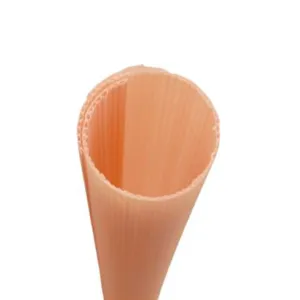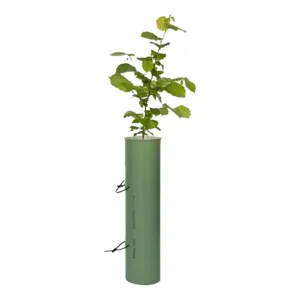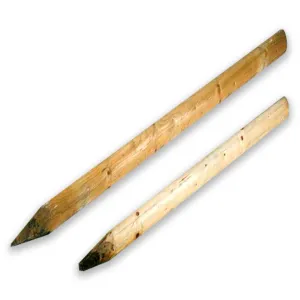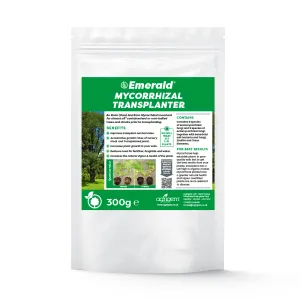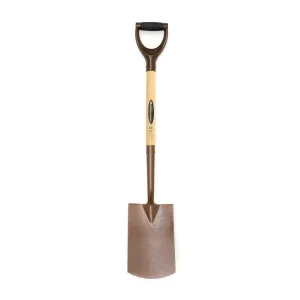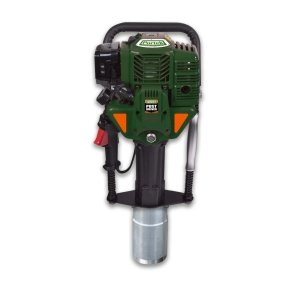Why use tree stakes and shelters?
Wind protection: Young trees are particularly vulnerable to strong winds, which can cause their roots to loosen and hinder proper growth. Tree stakes offer support, preventing the tree from swaying excessively and promoting a stable foundation.
Browsing mammal & vermin protection: Shelters provide homes for newly planted trees, helping to protect from browsing mammals and harsh elements.
Mini greenhouse: Shelters can act as mini greenhouses, helping to attract sunlight and warmth.
Establishing straight growth: Properly installed tree stakes guide the growth of the tree, encouraging a straight trunk. This is crucial for the tree's overall health and aesthetic appeal.
Preventing breakage: Heavy rain, snow, or even accidental bumps can lead to breakage in young and fragile branches. Stakes and shelters act as a protective barrier, reducing the risk of damage.
Choosing the right tree stakes and shelter
Before diving into the installation process, it's essential to select the appropriate tree stakes for your specific needs. Make sure to consider the following factors:
Material: Common materials for tree stakes include wood, metal and composite materials. Each has its advantages, but it's crucial to choose a stake that is durable, weather-resistant and won't harm the tree.
Shelters tend to be made with bidegradeable materials. There are double-walled ones that expand as the tree grows, plus spiral guards that provide extra protection against browsing mammals.
Height: The height of the stake should should reach approximately half the length of the tree, with a significant amount in the soil for stability. Choose our Machine Round Tree Stakes for larger trees, and Square Pointed Stakes for smaller, feathered varieties.
Most shelters expand with growth, so it's just the height of a shelter that's important - not too long or short. There are shorter shelters available, ideal for shrubs.
How many?: You'll need one shelter for one tree. With stakes, typically, one or two stakes are sufficient for most young feathered trees. However, taller, larger or more vulnerable trees may require additional support such as double stakes with a cross bar attached and secured with rubber belting.
Step-by-step guide to proper tree stake and shelter installation:
1: Choose the right time
Late autumn to early spring is the best time for planting. Select a day with favourable weather conditions. Mild temperatures and calm winds make the installation process more manageable.
2: Positioning the stakes and shelter
Our Tubex Tree Shelters are perfect for smaller, feathered trees. They come pre-fitted with cable zip ties, ready to connect to a stake, for extra support. Place your shelter over your whole tree and lightly press it into the soil. It's fine if the top of your tree is poking out at the top of the shelter. Now it's time to attach the stake. For feathered, smaller trees, just one stake will suffice, attached direcly next to the shelter. Our Spiral shelters offer extra support against browsing mammals, so are great for commercial landscaping, or areas where wildlife is prevalent. Planted a shrub? Opt for our Tubex Shrub Shelter, speficially made for small trees and shrubs.
For larger trees, opt for two Machine Round Stakes, evenly spaced each side of the tree. There are different height sizes available - just choose the one that better fits the length of your tree. Position them away from the tree's root ball to avoid damaging the roots, and fit them roughly half-way up the tree's length.
3: Tying the tree to the stakes
A cable tie will work well when attaching your stake to your shelter - most shelters come with ties attached, so just double check before purchasing. If you've opted for no shelter, use a soft material, such as tree straps or rubber ties, to secure the stakes to the tree. Avoid using wires or cords that can cut into the tree's bark. For extra support, consider a cross bar to secure the stakes - attach and secure using rubber belting and nails.
4: Adjusting tension
Ensure that the ties are snug but not overly tight. The tree should have some flexibility to encourage natural movement, which contributes to trunk strength.
5: Regular inspection
Check the stakes and ties regularly, especially during the tree's first year. Adjust as necessary to accommodate the tree's growth.
6: Remove stakes when ready
Once the tree has established a strong root system (around 2 years) and can stand on its own, remove the stakes. Leaving them in place for too long can hinder the tree's development.
Tree stakes are indispensable tools for nurturing the growth of young trees, providing support and enhancing their overall resilience. By selecting the right stakes and following proper installation techniques, you contribute to the long-term health and aesthetic of your trees. Don't forget, there are many other tools which aid to a trees development and overall health, including shelters and mulch mats. Remember, each tree is unique, so monitor progress regularly and make adjustments as needed. With a little care and attention, you can enjoy the satisfaction of watching your trees thrive.





